ptaquiloside
- CAS NO.:87625-62-5
- Empirical Formula: C20H30O8
- Molecular Weight: 398.45
- MDL number: MFCD01683966
- SAFETY DATA SHEET (SDS)
- Update Date: 2025-04-17 18:22:24
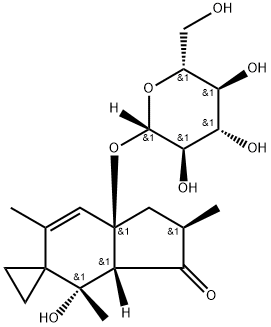
What is ptaquiloside?
Description
Ptaquiloside1 is a natural norsesquiterpene glucoside toxin present in bracken ferns2 (Pteridium aquilinum and other species). In 1983, it was isolated and characterized by Kiyoyuki Yamada and colleagues at Nagoya University (Japan), the University of Tokyo, and JEOL Ltd. (Tokyo).
Ptaquiloside is a carcinogen and the cause of hemorrhagic disease and bright blindness in cattle and other livestock. It can enter the milk and meat of affected animals and is known to cause esophageal and gastric cancer in humans. In 2019, Lars Holm Rasmussen and co-workers at the University of Copenhagen elucidated the biochemical fate of ptaquiloside in cattle.
Ptaquiloside has been well studied and reported, including in Chapter 13 of Color Atlas of Diseases and Disorders of Cattle (3rd ed., 2011) and in several publications cited by Science.gov in the 2000s and 2010s.
Although ptaquiloside is highly toxic, no safety data sheets for it are available.
1. SciFinder: Spiro[cyclopropane-1,5′-(5H)inden]-3′(2′H)-one, 7′a-(β-d-glucopyranosyloxy)-1′,3′a,4′,7′a-tetrahydro-4′-hydroxy-2′,4′,6′-trimethyl-, (2′R,3′aR,4′S,7′aR)-.
2. People who collect the edible ostrich fern (Matteuccia struthiopteris) must be careful to avoid bracken ferns that grow in the same temperate climates.
Properties of ptaquiloside
| Melting point: | 85-89 °C(Solv: hexane (110-54-3); acetone (67-64-1)) |
| Boiling point: | 620.7±55.0 °C(Predicted) |
| alpha | D22 -188° (c = 1 in methanol) |
| Density | 1.43±0.1 g/cm3(Predicted) |
| solubility | highly soluble |
| pka | 12.85±0.70(Predicted) |
| appearance | white powder |
| IARC | 3 (Vol. 40, Sup 7) 1987 |
Safety information for ptaquiloside
Computed Descriptors for ptaquiloside
New Products
4,4-Difluoropiperidine hydrochloride tert-butyl 9-methoxy-3-azaspiro[5.5]undecane-3-carboxylate Indole Methyl Resin N-Isopropylurea N,N-Dicyclohexylcarbodiimide(DCC) MELDRUMS ACID 5-METHYLISOXAZOLE-4-CARBOXYLIC ACID Magnessium Bis glycinate Zinc ascorbate 1-bromo-2-butyne 2-acetamidophenol 9(10H)-anthracenone Erythrosin B, 4-Piperidinopiperidine 2-((4-morpholinophenylamino) (methylthio) methylene) malononitrile 2,4-dihydroxybenzaldehyde 3-(4-morpholinophenylamino)-5-amino-1H-pyrazole-4-carbonitrile Methyl 2-methylquinoline-6-carboxylate 2,6-dichloro-4-nitropyridine 4-Bromo-2-chlorobenzonitrile 2-(benzylamino)acetic acid hydrochloride 4-(tert-Butoxycarbonylamino)but- 2-ynoic acid 3,4-dihydro-2H-benzo[b][1,4]dioxepine 1-Phenyl-1-cycloprppanecarboxylicacidRelated products of tetrahydrofuran
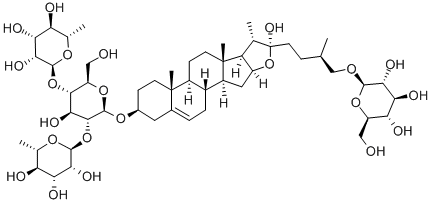
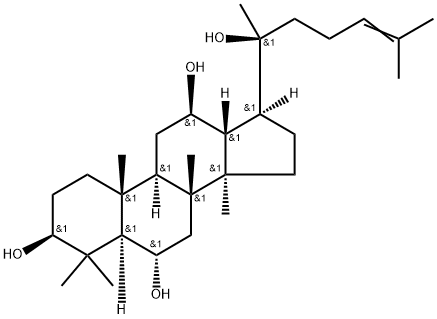
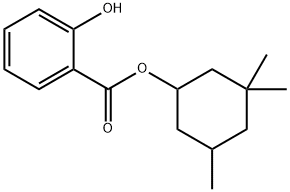
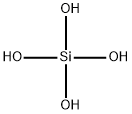




You may like
-
 3-(4-amino-1-oxoisoindolin-2-yl)-1-methylpiperidine-2,6-dione 98%View Details
3-(4-amino-1-oxoisoindolin-2-yl)-1-methylpiperidine-2,6-dione 98%View Details -
 1-methylindoline-2,3-dione 98%View Details
1-methylindoline-2,3-dione 98%View Details
2058-74-4 -
 614-19-7 98%View Details
614-19-7 98%View Details
614-19-7 -
 3112-85-4 Methyl phenyl sulfone 98%View Details
3112-85-4 Methyl phenyl sulfone 98%View Details
3112-85-4 -
 20677-73-0 (2,2-diethoxyethyl)methylamine 98%View Details
20677-73-0 (2,2-diethoxyethyl)methylamine 98%View Details
20677-73-0 -
 3-(4-(hydroxyamino)-1-oxoisoindolin-2-yl)piperidine-2,6-dione 98%View Details
3-(4-(hydroxyamino)-1-oxoisoindolin-2-yl)piperidine-2,6-dione 98%View Details -
 57381-49-4 2-bromo-4-chlorobenzonitrile 98%View Details
57381-49-4 2-bromo-4-chlorobenzonitrile 98%View Details
57381-49-4 -
 4,6-dichloropyrimidine-5-carbaldehyde 98%View Details
4,6-dichloropyrimidine-5-carbaldehyde 98%View Details
5305-40-8
